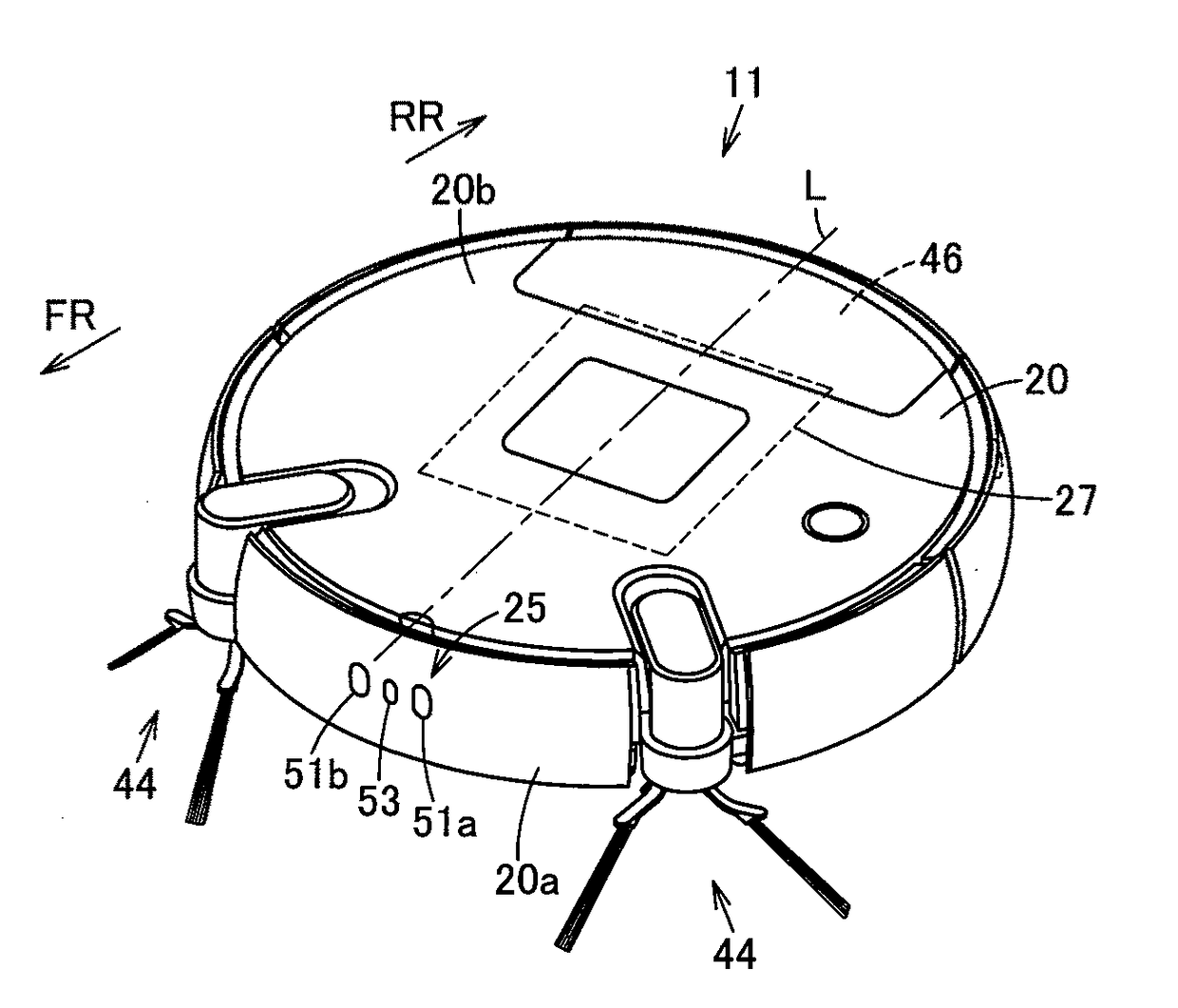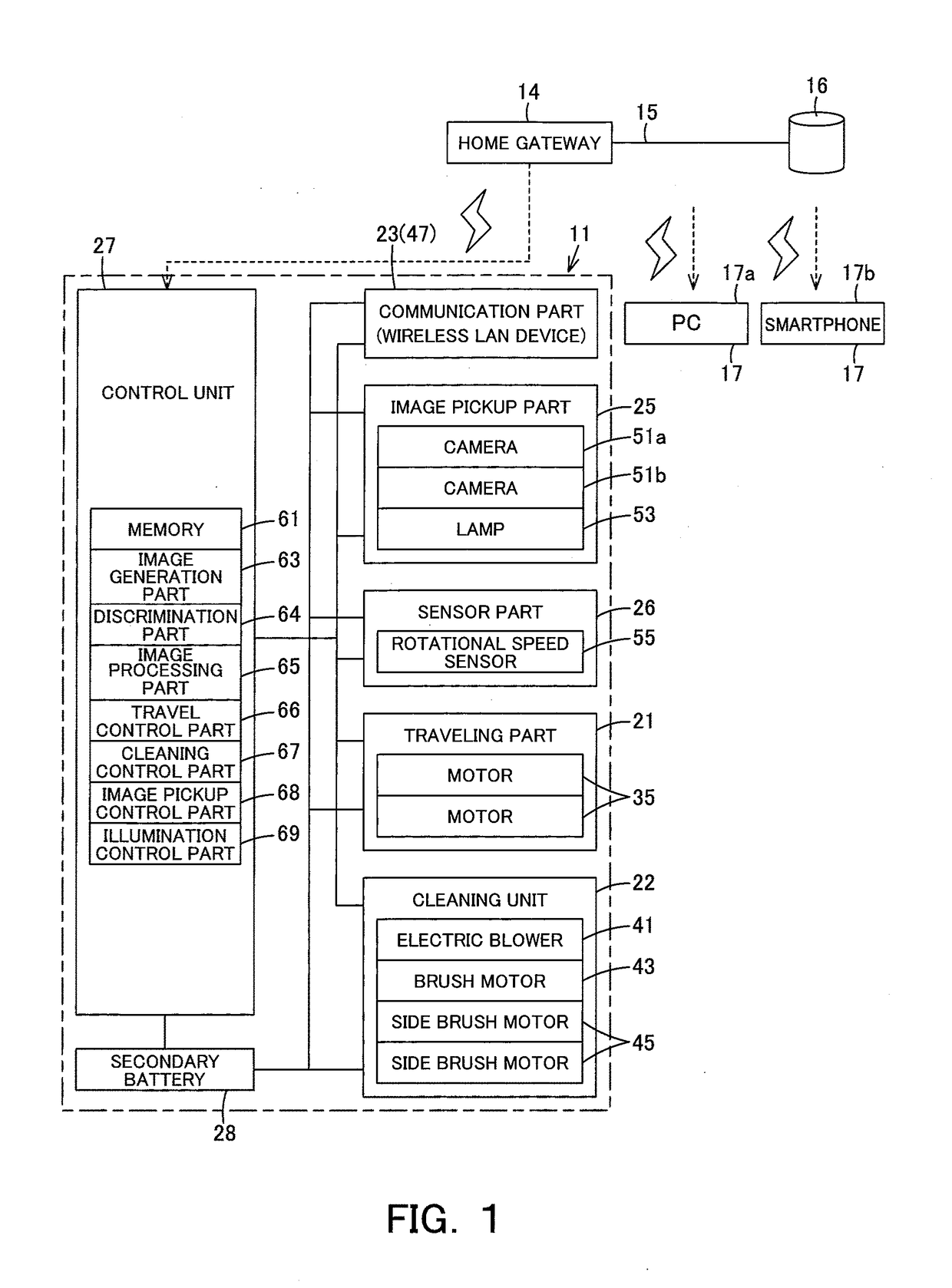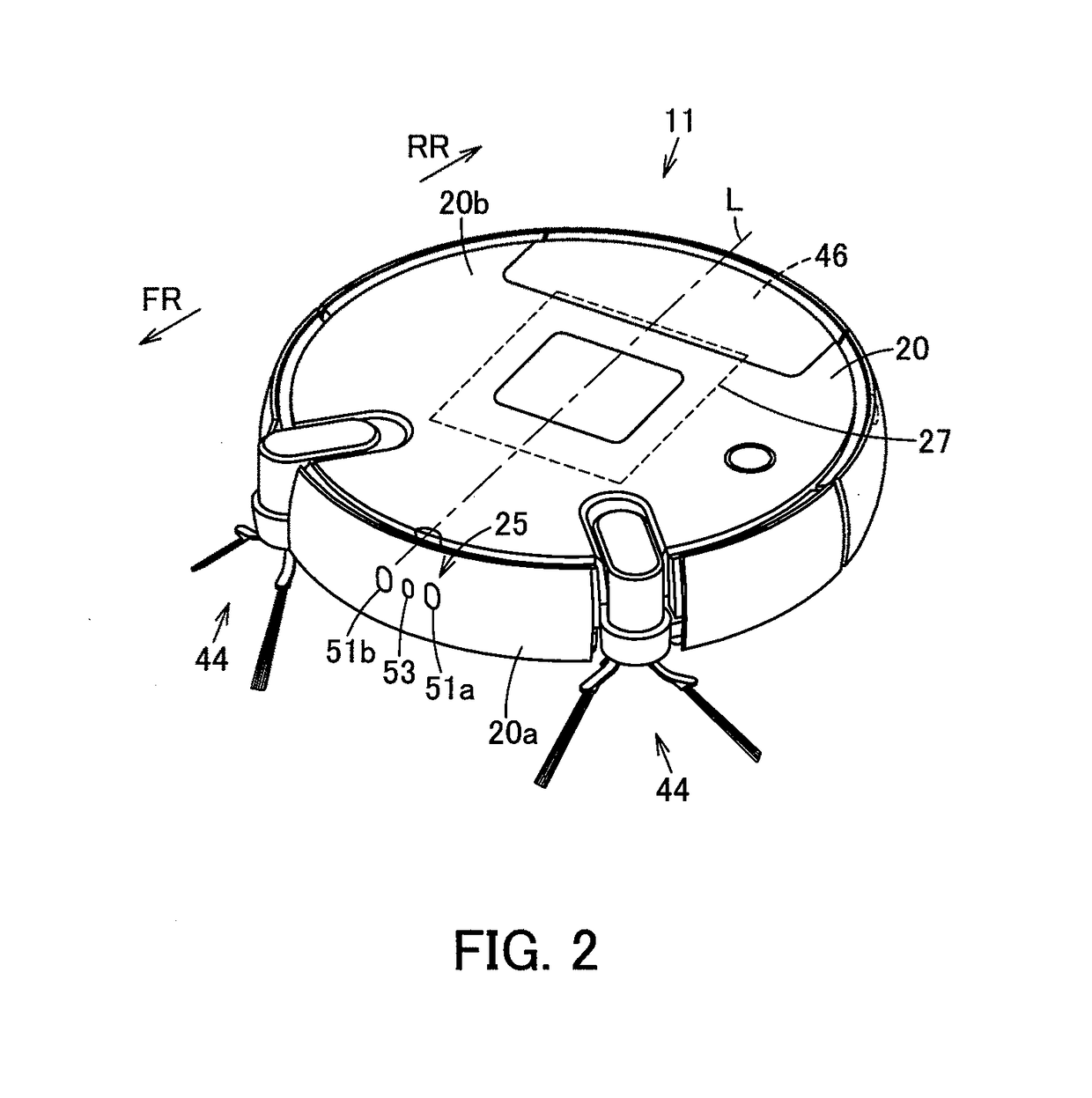Vacuum cleaner
a vacuum cleaner and vacuum cleaner technology, applied in the field of vacuum cleaners, can solve the problems of difficult to detect obstacles, and the vacuum cleaner cannot receive infrared rays properly, and achieve the effect of improving obstacle detection precision
- Summary
- Abstract
- Description
- Claims
- Application Information
AI Technical Summary
Benefits of technology
Problems solved by technology
Method used
Image
Examples
first embodiment
[0023]Hereinbelow, a first embodiment will be described in terms of its constitution with reference to the accompanying drawings.
[0024]In FIG. 1 to FIG. 4, reference sign 11 denotes a vacuum cleaner. This vacuum cleaner 11 constitutes a vacuum cleaner device (vacuum cleaner system) in combination with a charging device (charging stand) 12 (FIG. 4) as a station device serving as abase station for charging of the vacuum cleaner 11. Then, the vacuum cleaner 11, in this embodiment, is a so-called self-propelled robot cleaner (cleaning robot) which cleans a floor surface that is a cleaning-object surface as a traveling surface while autonomously traveling (self-propelled to travel) on the floor surface, the vacuum cleaner being enabled to perform wired or wireless communication with a general-purpose server 16 as data storage means (a data storage part) or a general-purpose external device 17 as display means (a display part) via an (external) network 15 such as the Internet, for example...
second embodiment
[0072]In addition, in the second embodiment described above, in the case where the discrimination part 64 re-discriminates whether or not the object is an obstacle while traveling at slower traveling speed after discriminating that the object is an obstacle, the first speed and the second speed have been set. However, the same processing for the discrimination with regard to whether or not the object is an obstacle may be repeated three times or more while traveling at three different levels or more of reduced traveling speed. In this case, it is preferable that the specified set distance be set smaller (the image range of the distance image be set wider) in the case of the traveling speed being lower.
[0073]Also, upon discriminating that the object is an obstacle, the discrimination part 64 can, instead of traveling at lower speed, also re-discriminate whether or not the object is an obstacle after, for example, the vacuum cleaner 11 (main casing 20) is slightly turned by a specifie...
third embodiment
[0076]Next, the third embodiment will be described referring to FIG. 12. In addition, with regard to the same constitution and action as the embodiments described above, respectively the same reference sign is assigned and the description thereof is omitted.
[0077]The third embodiment includes a beam irradiation part 73 as light emitting means (a light emitting part) different from the lamp 53, disposed between the cameras 51a, 51b in the embodiments described above.
[0078]The beam irradiation part 73 with a light-emitting element, for example, an LED or a semiconductor laser is configured to irradiate a light beam B such as visible light or infrared ray forward in the traveling direction of the main casing 20. The beam irradiation part 73 is disposed at the intermediate position between the cameras 51a, 51b, that is, at the position on the center line L in the side surface portion 20a of the main casing 20. That is, the beam irradiation part 73 is distanced generally equally from the...
PUM
 Login to View More
Login to View More Abstract
Description
Claims
Application Information
 Login to View More
Login to View More - R&D
- Intellectual Property
- Life Sciences
- Materials
- Tech Scout
- Unparalleled Data Quality
- Higher Quality Content
- 60% Fewer Hallucinations
Browse by: Latest US Patents, China's latest patents, Technical Efficacy Thesaurus, Application Domain, Technology Topic, Popular Technical Reports.
© 2025 PatSnap. All rights reserved.Legal|Privacy policy|Modern Slavery Act Transparency Statement|Sitemap|About US| Contact US: help@patsnap.com



